Origins of meringue
Small and crumbly ideal addition to cakes or cup of gelato, soft and creamy "Italian style" to embellish lemon tarts, large-sized and soft heart for a very sweet treat. Foamy and snow-white, meringue is a fundamental preparation in pastry art, and by no means obvious: making perfect meringue requires patience and precision, but the result will be worth the effort. The origins of this dessert are probably to be traced back to 18th-century Switzerland, when the Italian pastry chef Gasparini prepared it to win the heart of Princess Maria, betrothed to King Louis XV. But the hypotheses about the birth of meringue are many, as found in the book "Meringue" by Linda K. Jackson and Jennifer Evans Gardner: "Meringue is not only magical. It is mysterious. Nobody agrees on its origins (spoiler: it was not invented in France)." The most accredited theory is Gasparini, but some food historians believe that the name derives from the Polish term marzynka, which indicated a preparation created by the chef in service for King Stanislaw Leszcyński, who later became Duke of Lorraine, who passed the recipe to his daughter Maria, who in turn introduced it to France.
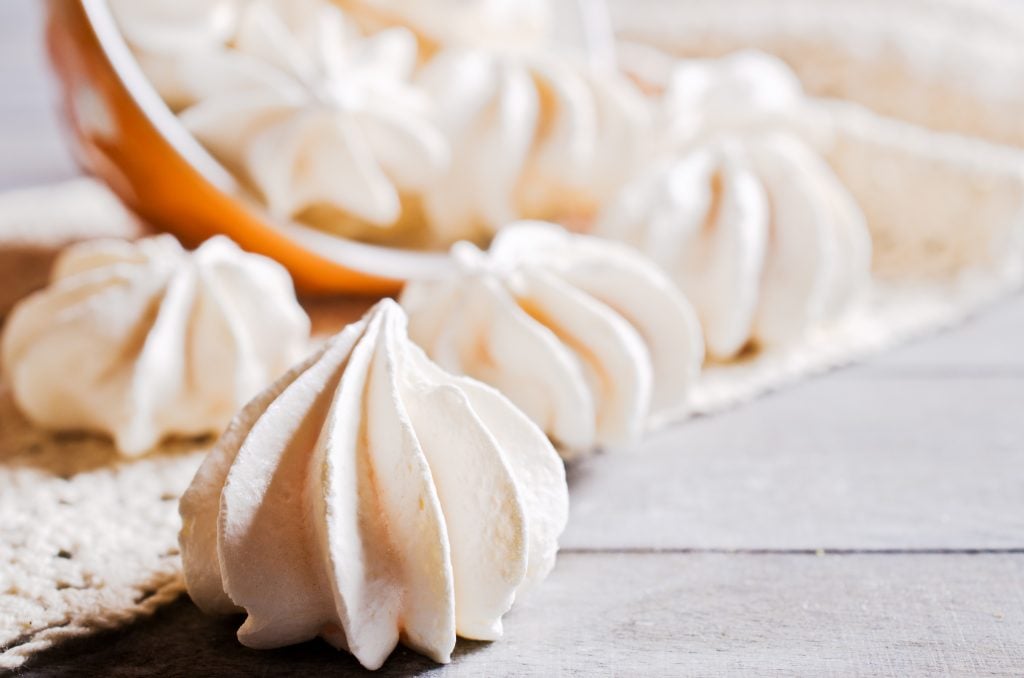
Meringue, the sweet of sovereigns
A plausible hypothesis, considering that Leszcyński was a true gourmand: it is also to him that we owe the birth of another great dessert, the babà, born from his intuition to add a rum syrup to the kugelhopf, a traditional Alsatian cake considered too dry by the sovereign. It would seem, however, that meringue is even older and has origins in England: the first evidence of a similar product, a dessert made with beaten egg whites and sugar, is handwritten by the author Elinor Fettiplace and dated 1604. Whatever its origins, oven-baked meringue took on its current form only at the beginning of the 19th century, when French chef Marie Antoine Carême used a pastry bag for the first time. Meringues soon spread throughout Europe, conquering the hearts of kings and, in particular, queens: it is said that Marie Antoinette prepared them with her own hands, and that Elizabeth I was so delighted that she renamed them "kiss".
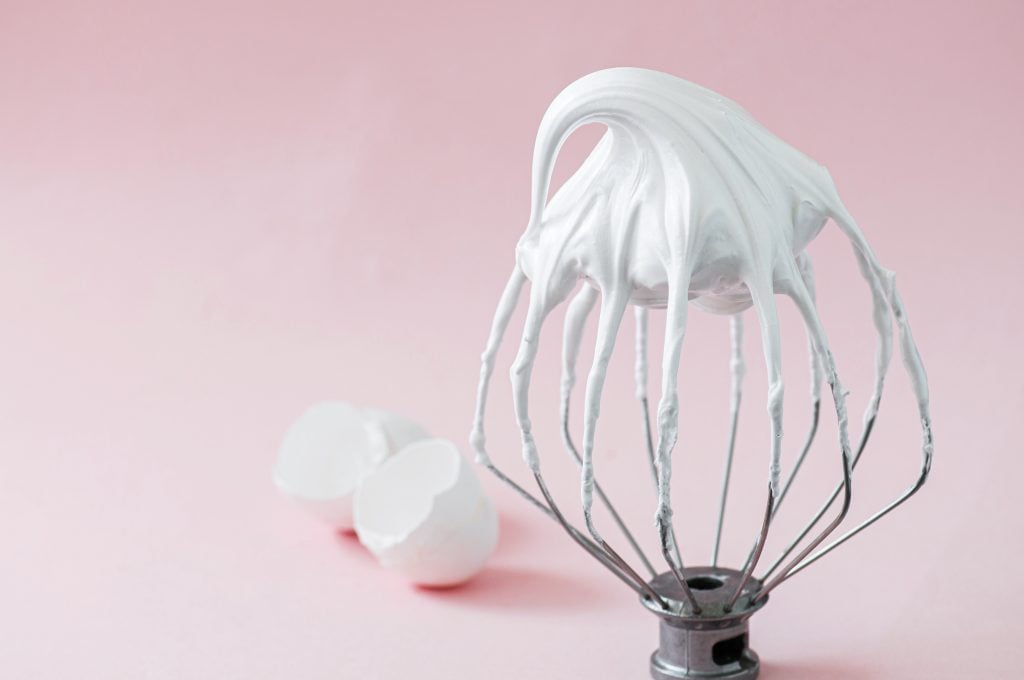
How to make meringue
Let's focus on the technique, which can often be intimidating. Preparing meringue is not a difficult task if you follow a few simple rules. At the base of it all, there is in fact a scientific process: the transformation of egg white proteins, which break down to recombine into a new structure, taking in air and increasing in volume. The addition of sugar helps stabilise the frothy mixture and maintain its shape, while the acidic element - usually cream of tartar or vinegar - serves to incorporate more air and expand the whipped egg whites. Depending on the texture and method of preparation, there are three types of meringues: French meringue, the classic one made by beating egg whites and sugar until the mixture is satiny and solid and then baked in the oven; Italian meringue, made with a hot sugar syrup added to the egg whites, with a result that's softer and creamier; and finally the Swiss meringue, more similar to the Italian one in texture but prepared in a bain-marie.
Recipes using meringue
Meringue is delicious as is, but it's often served in an even tastier version, with the addition of whipped cream and strawberries or other fresh fruit. It's great for decorating cakes or cups of steaming hot chocolate instead of marshmallows, and can also be used to create more elaborate recipes. Here are the most famous desserts that employ meringue.
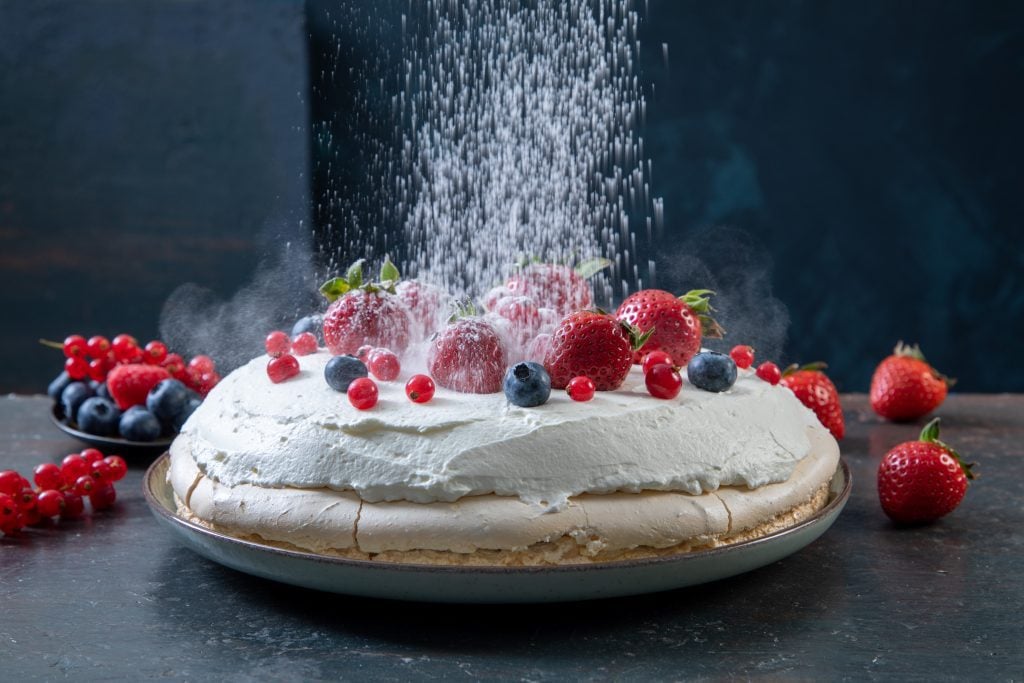
Pavlova
Scenic and inviting, Pavlova is probably the most famous meringue-based cake, born in Australia in honour of the Russian ballerina Anna Pavlova, who was there on tour in the 1920s. In Perth she met pastry chef Berth Sachse, who was enchanted by her beauty and elegance, and began to conquer her with his creations. A few years later, in 1931, the ballerina died and the pastry chef paid tribute to her with this creative and refined cake. It is a cake made up of a meringue base, a layer of whipped cream and red fruits: three fundamental elements that hide very specific meanings. The meringue symbolises the dancer's gracefulness, the whipped cream symbolises her elegance, and the red fruits recall the disease (pleurisy) she lost her life to. A romantic and dramatic story, which gave birth to one of the most famous desserts in Australia and New Zealand.
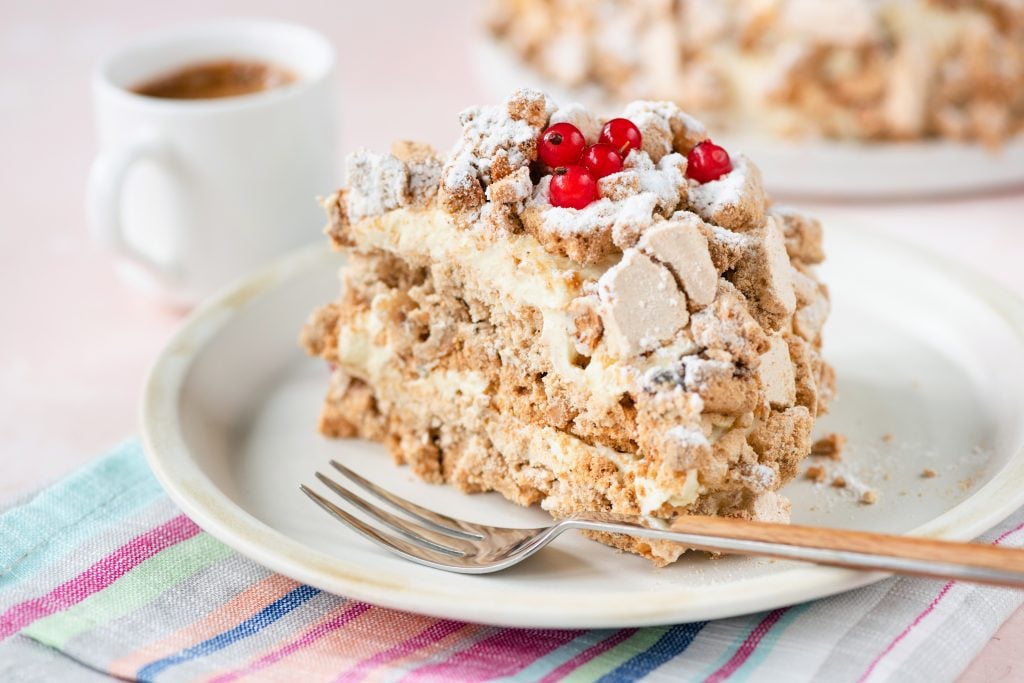
Meringata
Again whipped cream, this time in a semifreddo version: meringata is a fresh dessert perfect for adding a little sweetness on the hottest days, simple but effective. It's a cake made up of several discs of meringue alternating with layers of whipped cream, to which you can sometimes add chocolate chips, red fruits or other ingredients. The surface is then covered with crumbled meringue and placed in the refrigerator (as in the case of cheesecake, a springform pan is recommended).
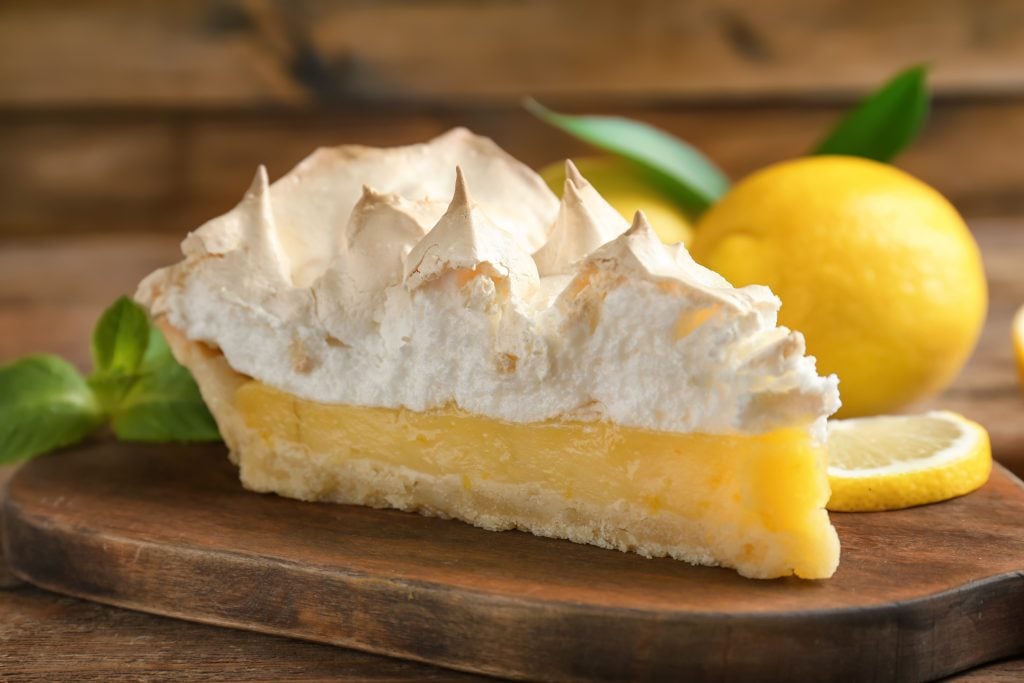
Tarte au citron meringuée
The "meringue" version of tarte au citron - a simple tart with lemon curd - has become so famous that by now all self-respecting contemporary pastry shops are trying their hand at its preparation. The lemon cake was already in vogue among mediaeval banquets, a period in which eggs and milk were rather cheap ingredients, but it is with the addition of soft and frothy meringue that it conquered everyone's palate. The base is a buttery shortcrust pastry filled with lemon curd, that is a smooth and fragrant cream made with eggs, sugar, butter and lemon, and finally topped with Italian-style meringue added raw and then caramelised with a torch or baked for a minute in the oven.
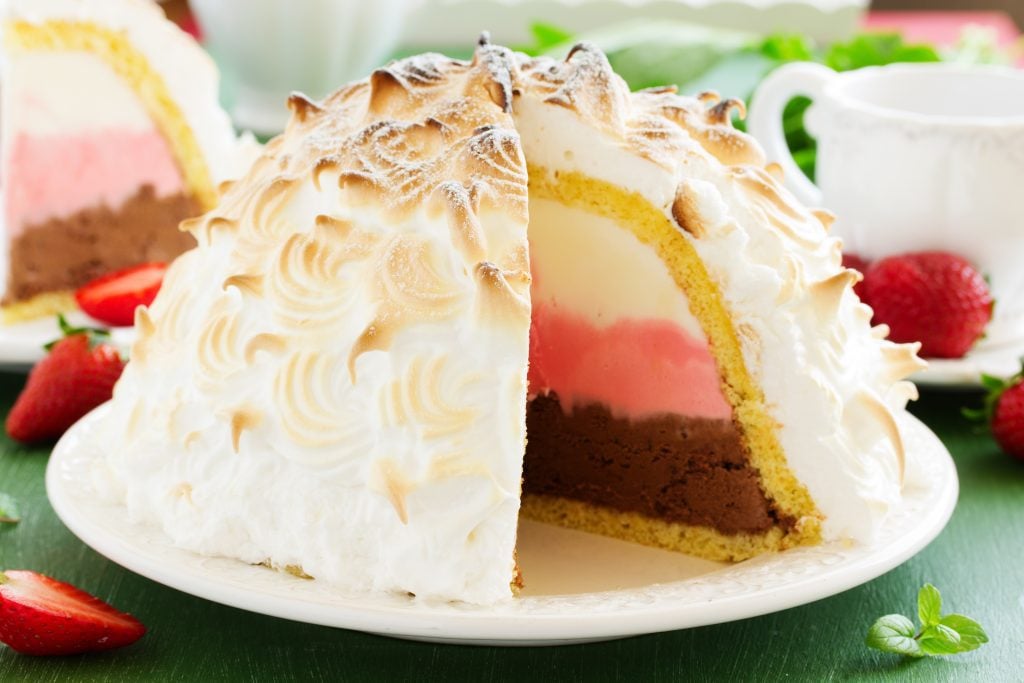
Baked Alaska
As the name suggests, this cake is dedicated to Alaska: in particular, to the acquisition of the country by the United States of America, which signed an agreement with the Russian Empire in 1868. Among the many claiming paternity of the cake, Charles Ranhofer, chef at Delmonico's restaurant in New York, appears to be the actual inventor of the recipe. A cake that recalls the territory of Alaska, and which resembles a kind of igloo: at the base there is sponge cake stuffed with ice cream but all around is the meringue, a white and tasty crust that contains a chilled filling.
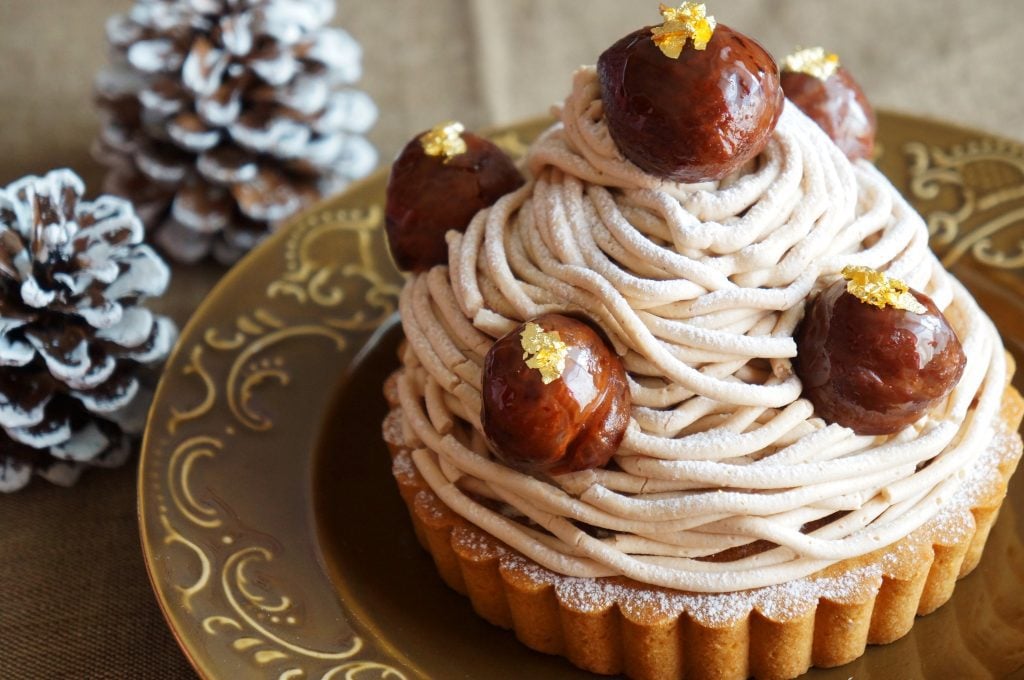
Mont Blanc
A soft chestnut puree, soft whipped cream and meringue: Mont Blanc, one of the most popular and famous desserts with meringue, born at the end of the 17th century and also represented by Nanni Moretti in the famous scene of his film "Bianca." Among the earliest and most well-known literary quotations, "Science in the Kitchen and the Art of Eating Well" by Pellegrino Artusi, while the origins seem to lead to the Duchy of Savoy, where the recipe was probably conceived, it was later reinterpreted in different ways in other countries.
Recipe for the soft citrus fruit meringue with sorbet
Ingredients
210 g egg whites
130 g sugar
500 g fresh cream
55 g egg yolks
65 g sugar
4 oranges
375 g water
The rind of 3 oranges
320 g sugar
1 teaspoon of ice cream stabiliser
1 lime
40 g Cointreau
Butter and sugar for the moulds
For the orange sorbet
Squeeze the citrus fruits separately; store the juice separately. Weigh 750 ml of orange juice. Use a mixer fitted with a crescent hook for cooking and pour the water, orange juice, zest and sugar into the stainless steel bowl. Start cooking by setting the temperature to 100° C with mixing phase 1 by inserting a splash guard. When the temperature is reached, stop cooking and add the liqueur, stabiliser and lime juice. Filter through a sieve, cool to room temperature and pour into an ice cream maker to churn.
For the crème Anglaise
Assemble the crescent hook for cooking; put the egg yolks and sugar in the stainless steel bowl and start on speed 4 until they are well incorporated. Add the cold milk and cream and set the temperature to 85° C with mixing phase 1. Once the temperature is reached, set the countdown to 5 minutes. Keep covered with cling film until ready to use.
For the soft meringues
Insert a coarse wire whisk. In the stainless steel bowl, pour the egg whites and sugar together; start working at speed 2. When it begins to foam, gradually increase the speed to 5 to beat the egg whites until stiff. Divide the mixture into 12 buttered and sugared crème caramel moulds and cook in a steam oven at 90° C or in a bain-marie in a ventilated oven at 120° C until they double the initial volume. Remove from the oven and cool.
Assemble
In a Martini glass spread 3 slices of peeled orange on the bottom, place the sorbet ball next and the meringue divided in two on top, pour the crème Anglaise just enough to completely cover the sorbet and a little bit of the meringue. Garnish with caramelised almonds well distributed over the meringue and serve immediately.
by Michela Becchi

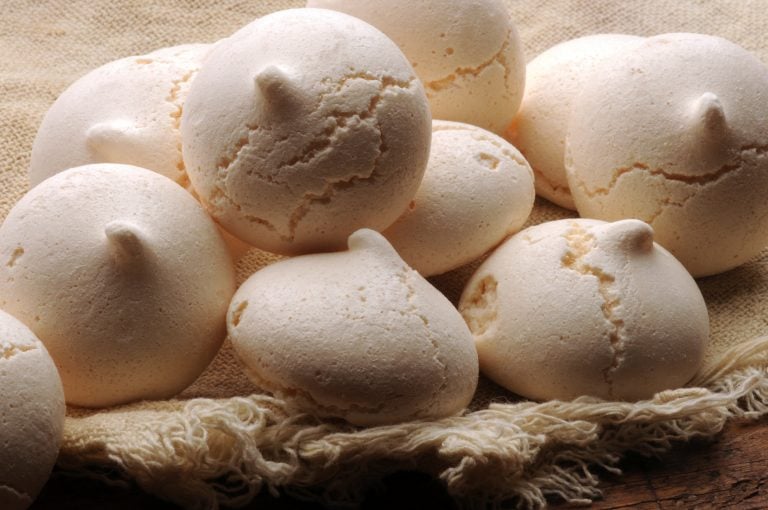
 Meloni: "Tariffs? If necessary, there will be consequences. Heavy impact on agri-food sector"
Meloni: "Tariffs? If necessary, there will be consequences. Heavy impact on agri-food sector" The Government honours the greats of Italian cuisine, from Bottura to Pepe. Massari: "Thank you, Meloni, the only one who listened to us"
The Government honours the greats of Italian cuisine, from Bottura to Pepe. Massari: "Thank you, Meloni, the only one who listened to us" "We must promote a cuisine that is not just for the few." Interview with Massimo Bottura
"We must promote a cuisine that is not just for the few." Interview with Massimo Bottura Wine was a drink of the people as early as the Early Bronze Age. A study disproves the ancient elitism of Bacchus’ nectar
Wine was a drink of the people as early as the Early Bronze Age. A study disproves the ancient elitism of Bacchus’ nectar "From 2nd April, US tariffs between 10% and 25% on wine as well." The announcement from the Wine Trade Alliance
"From 2nd April, US tariffs between 10% and 25% on wine as well." The announcement from the Wine Trade Alliance






